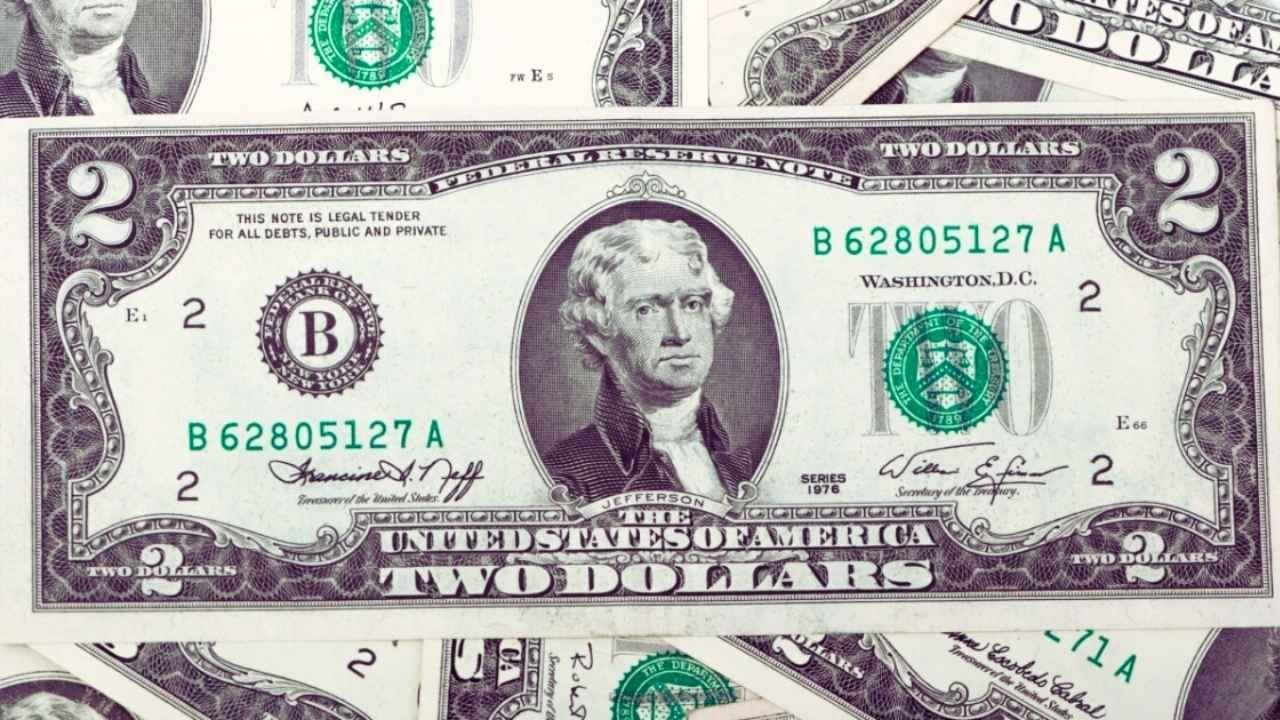Ever pulled a $2 bill from your wallet and thought it felt a bit special? You’re not wrong. While most of these greenbacks are just worth two bucks, one super rare version from way back could land you close to a million dollars. Experts say this 1890 gem, known as the Grand Watermelon, might still be floating around in everyday cash drawers or old family stashes. It’s got folks digging through their change jars, hoping for a windfall that could change their lives.
A Slice of History on Paper
The $2 bill kicked off in 1862, right in the thick of the Civil War, when the U.S. needed quick cash. Back then, it sported Alexander Hamilton’s face, but by 1869, Thomas Jefferson took over as the star. Fast forward to 1890, and the Treasury rolled out some fancy designs to fight off counterfeiters. That’s where the Grand Watermelon comes in – a large-size note with a portrait of Jefferson on one side and a wild back showing allegorical figures like Commerce and Manufacturing. The real kicker? The reverse has these huge, colorful Treasury seals that look just like juicy watermelon slices, pink and green with flowing ribbons.
Only a handful of these beauties survive today, and even fewer in top shape. That’s why they’re so hot among collectors. In 2023, one pristine example hit the auction block and sold for a whopping $900,000, according to the Professional Coin Grading Service. It’s not just hype; these bills tell a story of America’s push for secure money in a rough era.
Spot the Clues to Cash In
So how do you know if that crumpled $2 in your drawer is the real deal? First off, size matters. The Grand Watermelon measures about 7.4 by 3.1 inches – way bigger than today’s slim 6.1 by 2.6 inch notes. Flip it over, and hunt for those oversized pink and green Treasury seals that scream “watermelon.” The serial numbers are black, and the edges should be crisp if it’s uncirculated. Any tears, folds, or stains knock down the value big time, but even a beat-up one could fetch thousands.
Don’t stop at the 1890 edition. Other $2 bills pack a punch too, like the 1928 red-seal version or pre-1913 notes that start at $100 in rough shape and climb to $500 plus if fresh. Star notes – those with a little star in the serial – or misprints like double seals are gold mines. Keep an eye on the series year printed near Jefferson’s portrait; anything before 1913 is a solid bet for extra dough.
Where These Treasures Hide Out
You might think rare bills are locked in vaults, but nope. Since $2 notes are still legal tender, that Grand Watermelon could pop up anywhere – from a flea market haul to grandma’s cookie jar. People have scored big finding them in old books, estate sales, or even as tip money at a diner. With over 1.5 billion $2 bills buzzing around the U.S., per Federal Reserve stats, the odds are long but real. Small spots like gas stations or antique shops see more of them than big banks.
Quick Guide to $2 Bill Gems
Want the lowdown on hot $2 bills? Here’s a simple rundown of standouts and their rough values in good condition:
| Bill Type | Year | Key Feature | Estimated Value |
|---|---|---|---|
| Grand Watermelon | 1890 | Large size, watermelon seals | Up to $900,000 |
| Red Seal Note | 1928 | Red Treasury seal | $5 to $1,000 |
| Pre-1913 Large | 1896 | Ornate back designs | $100 to $500 |
| Star Replacement | Varies | Star in serial number | $50 to $300 |
These are ballpark figures; get a pro appraiser for the real scoop.
Why Hunt Now? The Buzz Is Building
The collector world is on fire for these old $2 bills, driven by online auctions and shows like Heritage Auctions. As more folks go cashless, physical rarities like the Grand Watermelon gain even more charm. It’s not just about the money – owning a piece of history feels cool too. If you snag one, don’t spend it; head to a grading service or dealer for a check. Who knows? That lucky $2 could turn your next yard sale into retirement central. Keep your eyes peeled, America – fortune might be folded in your jeans.
